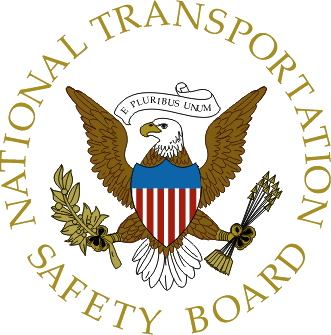Travel Tips
Buffalo, NY Crash Investigation Raises Training, Safety Questions About Regional Airlines
 As more details are revealed about the final conversation between the pilot and co-pilot of the plane that crashed near Buffalo three months ago, serious concerns are coming to light about whether the two should have been flying at all, and how much responsibility should be borne by the airline.
As more details are revealed about the final conversation between the pilot and co-pilot of the plane that crashed near Buffalo three months ago, serious concerns are coming to light about whether the two should have been flying at all, and how much responsibility should be borne by the airline.
The National Transportation Safety Board (NTSB) is currently in the midst of a three-day hearing into the cause of the crash of Continental Connection flight 3407 on February 12, 2009.
Both the pilot and co-pilot lost their lives in the disaster, along with 48 other people both in the plane and on the ground.The transcript of the cockpit audio recordings show that the pair—pilot Marvin Renslow and co-pilot Rebecca Shaw—talked about everything from their career plans, to their inexperience dealing with icy conditions, to their health in the minutes before the plane went down.
That final conversation highlighted several areas of urgent concern for NTSB investigators, which is why the agency chose to hold the hearing so soon after the crash. The NTSB normally doesn’t discuss crash findings until months or even years into an investigation, but in the interest of transparency and due to the high level of public interest, the agency made an exception.
The first and most obvious concern was the amount of conversation itself. Not only were the pilots in clear violation of FAA policy which limits talk in the cockpit to operational matter during takeoff and landing, but the distraction caused by the chatter likely led to crucial mistakes controlling the plane.
Renslow did not notice one anti-stall warning system, and then counteracted another emergency system that was designed to turn the plane’s nose downward if its speed got too slow. Instead Renslow pulled the plane up (slowing it further), which ultimately led to a loss of control and subsequent crash. Many are questioning whether either pilot was experienced enough to be flying that plane on that day. Though ice was not determined to be the primary factor in the crash, as initially thought, Shaw revealed serious anxiety about flying in icy conditions when she discovered ice building up on the wings and windows of the plane. Her admitted lack of any experience flying in icy weather raises questions about why she was allowed to co-pilot a winter flight to a frigid destination such as Buffalo.
Many are questioning whether either pilot was experienced enough to be flying that plane on that day. Though ice was not determined to be the primary factor in the crash, as initially thought, Shaw revealed serious anxiety about flying in icy conditions when she discovered ice building up on the wings and windows of the plane. Her admitted lack of any experience flying in icy weather raises questions about why she was allowed to co-pilot a winter flight to a frigid destination such as Buffalo.
Renslow stated in the transcript that he felt comfortable in icy conditions, but his personnel records reveal that he was not trained on how to recover from a stall and reportedly failed several simulator tests during his training. He also had less than 100 hours flight time in a Dash 8 Q400.
Colgan Air, the operator of the flight, was criticized by the NTSB for letting Renslow fly without proper training in the “stick push” procedure, but they said that the FAA does not require such training.
The NTSB said fatigue was a factor in the crash, and hammered Colgan Air for possibly contributing to stress and fatigue in the pilots.Shaw’s home was in Seattle but Colgan Air’s base is in Newark, New Jersey. This meant that Shaw regularly had to take an overnight flight from the West Coast to the East Coast in order to report to work.
The day of the crash she had taken two connecting flights to Newark and reportedly had very little sleep. She spent part of the night in a FedEx crew rest area in Memphis. She also reported feeling congested on the flight audio recording. Renslow’s situation was similar. He lived in Florida but commuted to Newark, and on the night before the crash he had slept in a Colgan crew rest room, in violation of company policy.
Renslow’s situation was similar. He lived in Florida but commuted to Newark, and on the night before the crash he had slept in a Colgan crew rest room, in violation of company policy.
Colgan air officials say that it is the responsibility of crew members to be rested and healthy before flights, but the NTSB countered that the low pay and lack of adequate rest areas make that difficult.
Family members of those killed in the crash said Colgan was aware that many employees had difficulty getting enough rest and looked the other way.Shaw reportedly made only $16,000 per year, and may have been unable to afford to live in the Newark area. Company records show that 93 of the Colgan’s 137 pilots reside outside of the greater New York area.
The NTSB noted that Shaw may also have felt pressure not to call in sick, which may have meant going without pay.The hearing continues on Thursday. The NTSB has not officially determined the cause of the crash yet, and won’t release its complete findings until next year.
By Karen Elowitt for PeterGreenberg.com.
Related links: Washington Post, Fox News, WIVB, USA Today
Related links on PeterGreenberg.com:












